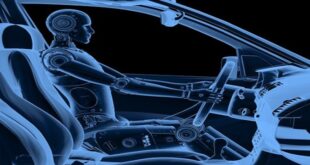Just about every new vehicle is fuel-injected. (The last carbureted vehicles came off the assembly line in 1990.) Although they’re more expensive to service than carburetors were, fuel injection systems with computerized electronic sensing devices have shown sufficient sensitivity, accuracy, and dependability to repay their cost with better performance, greater fuel economy, cleaner exhaust emissions, and more controllable power.
Some of the newest models are reported to be 95 to 100 percent clean-burning! Innovations in design are constantly producing cheaper and more durable systems. Basically, fuel injection systems inject fuel at precisely the right time and place for it to mix with air and form the fuel/air mixture that drives the engine. This section follows the fuel and air through the fuel injection system to the cylinders.
Fuel injection systems are too difficult to adjust or repair yourself, but if you know how they work, you can communicate with your technician more knowledgeably, which will save you time and money. Besides, it’s really interesting! Today’s engines use electronic fuel injectors that are controlled by transistors in the ECU known as injector drivers. The ECU relies on feeds from a variety of sensors to tell it the following.
Multi-port fuel injection
Most modern vehicles have multi-port fuel injection (MFI) with a separate fuel injector for each cylinder. This system mixes the fuel and air together right in the intake port for each engine cylinder just ahead of the intake valve. Here’s how multi-port fuel injection systems work.
The fuel rail assembly also may contain the fuel pressure regulator, which maintains proper fuel pressure and meters unused fuel back to the fuel tank. Fuel injectors, one for each cylinder, are attached at one end to the fuel rail and at the other end to the intake port in the engine.
Sequential fuel injection
More recent fuel-injected engines feature sequential fuel injection (SFI) in which the fuel injectors fire in sequence rather than all at once. Because each injector opens individually just before its intake valve opens, the fuel is always sprayed right into an open port and therefore stays in suspension.
if you have a six-cylinder multi-port fuelinjected engine that’s simultaneously fired, three of the six injectors are pulsed together, and then the other three injectors are pulsed.) In addition, emission levels are lower in an SFI system, but the system requires a separate electrical circuit for each injector.
Gasoline direct injection
The gasoline direct injection (GDI) system is relatively new in the United States but is expected to grow more popular as time goes on. It resembles diesel technology (see Chapter 9) but uses gasoline instead of diesel fuel. Instead of being mixed with air to form a fuel/air mixture prior to injection, the gasoline is injected directly into each engine cylinder.
The ECU uses data from various sensors to time the injection of the fuel into the cylinder and regulate the resulting fuel/air mixture for maximum efficiency under varying driving conditions.
Last word
Although a gasoline direct injection system is currently more expensive to build than a standard engine, it measures fuel so precisely that you get the most bang for the buck. However, to handle its higher emission of NOx emissions (nitrogen oxides), the GDI system requires a more costly catalytic converter than a standard engine does.
 Jobsearchdone.com Top News Share Website
Jobsearchdone.com Top News Share Website




